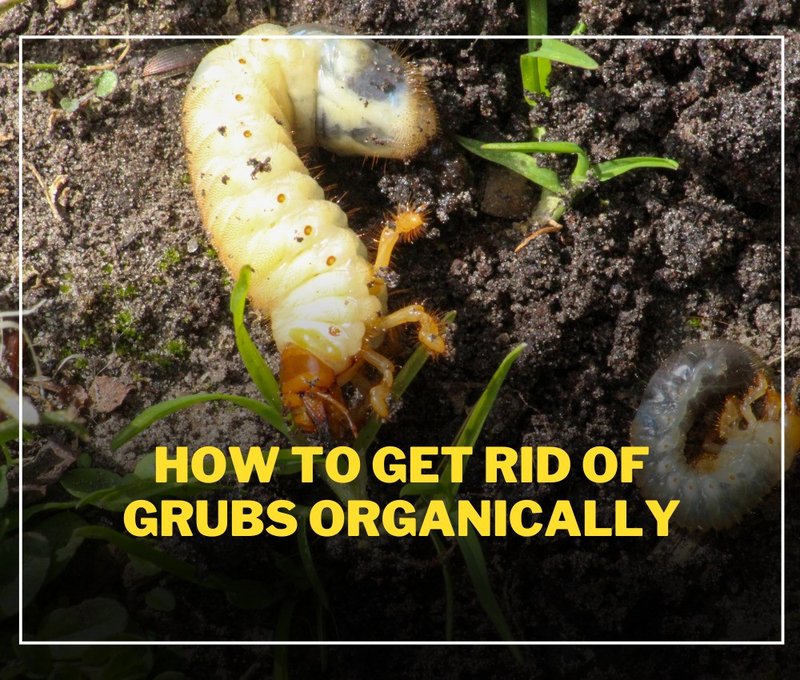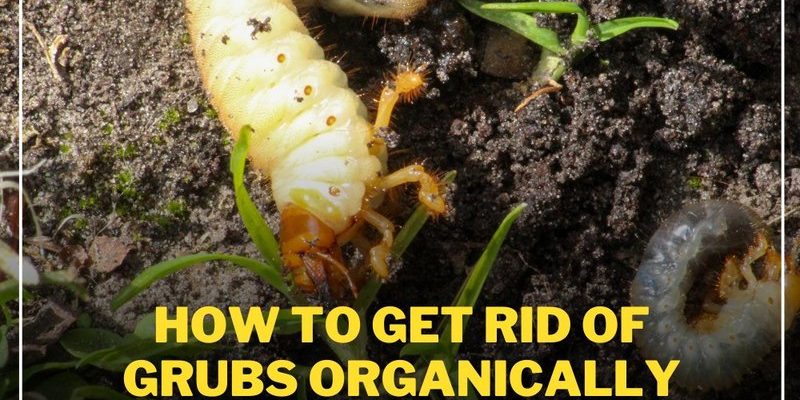
Grubs, the larvae of various beetles, thrive in moist soils and can wreak havoc if left unchecked. But don’t worry! You’re not alone in this fight. There are simple, natural solutions that can help you tackle this problem effectively. Let’s dive into the best organic methods to control grub worms that will have you feeling like a gardening pro in no time.
Understanding Grub Worms
Before we get into control methods, it’s essential to know what you’re dealing with. Grub worms are typically white, C-shaped larvae that can be found just beneath the surface of the soil. The most common culprits are the larvae of **Japanese beetles** and **June bugs**. A quick way to identify an infestation is by noticing patches of dead grass that lift easily when pulled—indicative that the roots have been chewed away.
These pests thrive particularly in the late summer and fall when they mate and lay eggs. If you spot signs of grubs, it might be time to take action. Remember, understanding their lifecycle can help you time your control measures effectively. The goal is to disrupt their growth before they become a nuisance.
Natural Deterrents: Beneficial Nematodes
One of the most effective organic methods is using **beneficial nematodes**. These microscopic worms are like tiny superheroes for your garden. They seek out grub worms and enter their bodies, effectively killing them off in a natural way.
Applying nematodes is straightforward. You can find them at garden centers or online. To use them, you mix them with water and apply them to moist soil—ideally in the evening when it’s cooler, as they prefer a shaded environment. Just imagine sending a battalion of mini warriors into your soil to chase away those pesky grubs! Over time, they can help keep your garden free from infestations.
Using Diatomaceous Earth
Another great organic option is **diatomaceous earth**, a powder made from fossilized algae. When grubs come into contact with it, the sharp particles cut through their exoskeletons, leading to dehydration and death.
To apply diatomaceous earth, simply sprinkle it over the affected area. It’s important to do this on dry days, as moisture can render it ineffective. Think of it as creating a barrier of tiny, invisible spikes that make your soil inhospitable for grubs. Just be sure to reapply after heavy rain or watering to maintain its effectiveness.
Crop Rotation and Planting Choices
Another strategy involves thinking about your gardening routine—**crop rotation** and strategic planting can make a big difference. By changing the types of plants you grow each season, you can disrupt the life cycle of grubs. For example, if you’ve had a heavy infestation of grubs, consider planting flowers or herbs that are less appealing to them.
You can also introduce **companion planting**, where certain plants help deter pests naturally. For instance, plants like marigolds and garlic can repel beetles, reducing the chance of grub worms showing up in the first place. With a little planning, you can reduce the grub population before it even starts.
Encouraging Natural Predators
Embracing the creatures that can help your garden is another approach. Birds, for example, are excellent at eating grubs. You can attract birds to your yard by setting up bird feeders or houses. Consider incorporating a **birdbath** to give them a place to drink and bathe.
Even beneficial insects, like ground beetles, love feasting on grubs. By creating a diverse environment with native plants and allowing some natural debris to stay in your yard, you can help support these natural predators. It’s like creating an ecosystem where your garden can thrive without those pesky grubs.
Maintaining Soil Health
Healthy soil is your garden’s best friend. Focusing on soil health can naturally help control grub worms. Regularly adding organic matter, like compost, can improve soil structure and fertility, making it less hospitable for grubs.
You might also want to invest in soil testing to understand what nutrients it needs. Healthy soil supports healthy grass and plants, which makes them more resilient to pest attacks. Think of it as giving your garden a strong foundation; the stronger it is, the less likely grubs will be able to take hold.
Timing is Key: When to Act
Timing your interventions is critical when it comes to controlling grub worms. It’s best to tackle them when they’re small and most vulnerable, usually in late summer or early fall. By applying treatments now, you can prevent them from maturing and causing more damage.
While this may seem overwhelming, knowing when to act gives you the upper hand. Keep an eye on your lawn or garden, and you’ll be able to spot the signs early on. It’s like being a detective in your own yard, watching for clues about what’s happening beneath the surface.
Dealing with grub worms can be challenging, but it’s definitely manageable with the right organic methods. From introducing beneficial nematodes to improving soil health and timing your interventions correctly, you have plenty of options at your disposal. Remember, gardening is as much about patience and observation as it is about action. With a little bit of effort and the right plants, you can protect your green space in a natural, effective way. Happy gardening!

